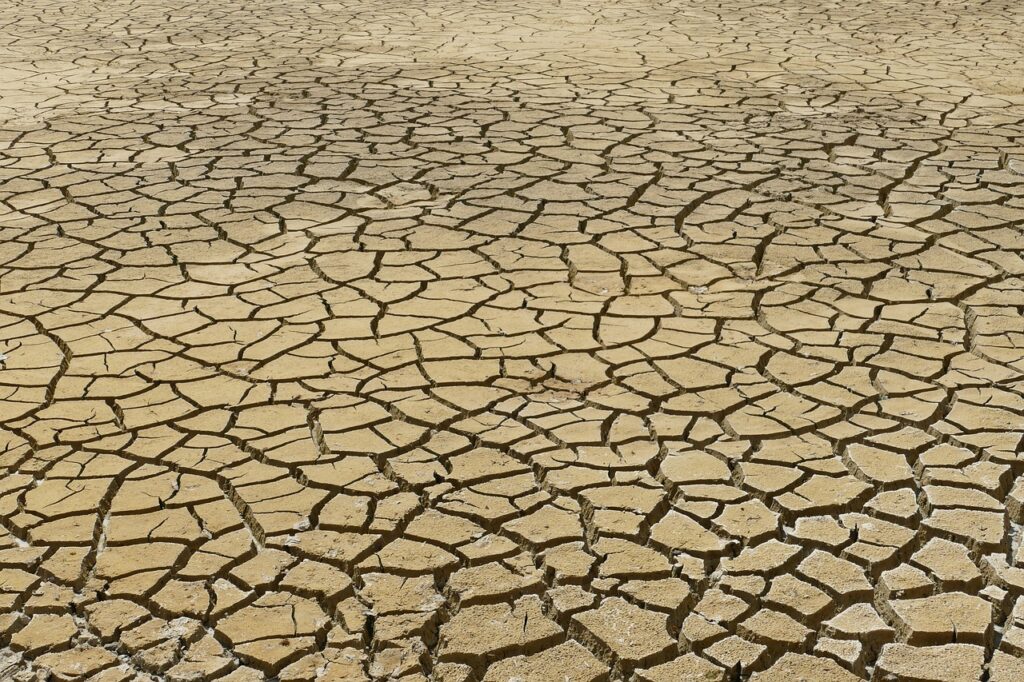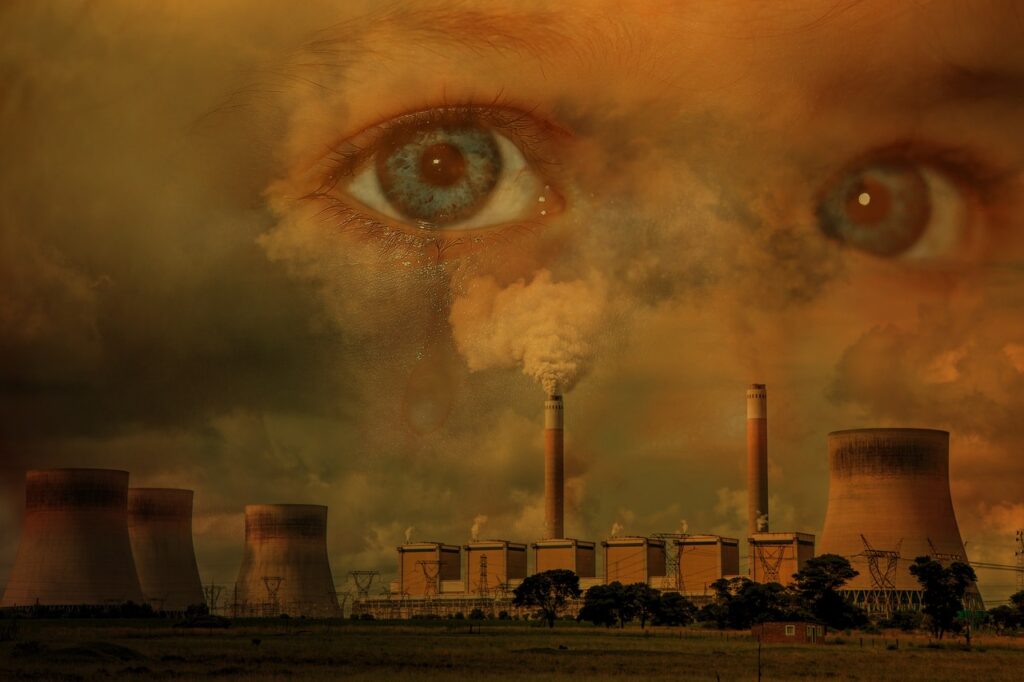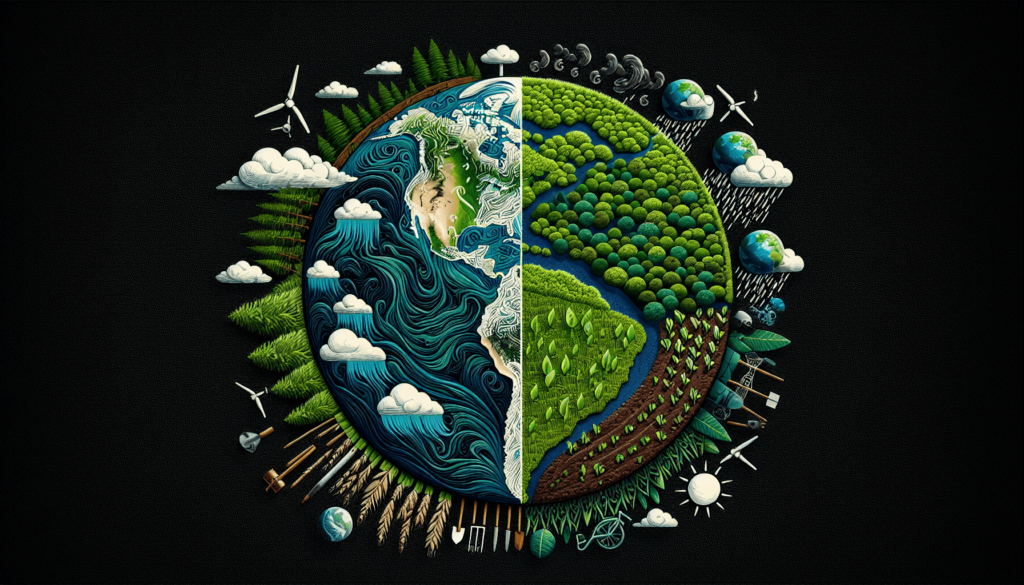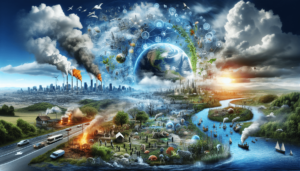In this article, we will discuss the predictions for future climate conditions. As the world continues to grapple with the effects of climate change, scientists and researchers are working tirelessly to understand and predict what lies ahead for our planet. From rising temperatures and extreme weather events to shifts in precipitation patterns and sea level rise, the predictions for future climate conditions are both alarming and crucial for us all to comprehend. Stay tuned as we explore the latest findings and projections that shed light on the potential scenarios we may encounter in the coming years.

Climate Change Models
Climate Models and Predictions
Climate change models are invaluable tools for scientists to understand and make predictions about future climate conditions. These models are complex computer programs that simulate the Earth’s climate system, taking into account various factors such as greenhouse gas emissions, solar radiation, and atmospheric interactions. By using these models, scientists can simulate different scenarios and predict how our climate may change over time.
These climate models rely on a vast amount of data, including historical climate records, satellite observations, and atmospheric measurements. Scientists collect and analyze this data to improve the accuracy and reliability of the models. The models are then adjusted to match the observed climate patterns, and used to project future climate conditions.
Accuracy and Uncertainties
While climate models have greatly advanced our understanding of climate change, they are not perfect and come with some uncertainties. These uncertainties arise from various sources, including the complexity of the climate system, limitations in our knowledge and data, and the difficulty in accurately predicting human behavior and technological advancements.
It’s important to note that uncertainties in climate models do not mean that the predictions are unreliable or should be dismissed. In fact, climate models have been remarkably accurate in projecting past climate changes. However, it’s crucial to account for these uncertainties when interpreting the results and making policy decisions. Scientists continuously work to improve the models and reduce uncertainties, but it is a complex and ongoing process.
Global Temperature Rise
Projected Temperature Increase
One of the most well-known consequences of climate change is the rise in global temperatures. Climate models predict that if greenhouse gas emissions continue at current rates, global temperatures could increase by several degrees Celsius by the end of this century. The exact magnitude of this increase depends on various factors, including future emissions scenarios and the effectiveness of mitigation efforts.
This projected temperature increase has far-reaching implications for the Earth’s climate systems. It can lead to more frequent and intense heatwaves, changes in precipitation patterns, and sea-level rise, among other impacts. It is crucial to mitigate greenhouse gas emissions and take action to prevent further temperature rise to avoid the most severe consequences of climate change.
Regional Variation
While global temperatures are expected to rise, the impact of this temperature increase will vary across different regions of the world. Some regions may experience more significant temperature changes than others, depending on factors such as geographical location, land cover, and natural climate variability.
For example, high-latitude regions, such as the Arctic, are projected to warm at a faster rate than the global average. This has severe implications for the melting of ice sheets and glaciers, as well as the survival of Arctic ecosystems. In contrast, some regions may experience relatively smaller temperature increases, but still face significant challenges due to changes in rainfall patterns, droughts, and water availability.
Extreme Heat Events
One of the most immediate and tangible impacts of global temperature rise is the increase in extreme heat events. Heatwaves are becoming more frequent, longer-lasting, and more intense in many parts of the world. These extreme heat events can have severe implications for human health, leading to heat-related illnesses and even fatalities.
Additionally, extreme heat events can impact agriculture, infrastructure, and energy systems. Heat stress on crops can reduce yields and affect food production, while heat waves can strain power grids and increase energy demands for cooling. It is crucial to implement measures to adapt to these extreme heat events and protect vulnerable populations from their effects.

Precipitation Patterns
Changes in Rainfall
Climate change is expected to disrupt precipitation patterns around the world. While overall global rainfall may increase, the distribution of rainfall across different regions and seasons is projected to change. Some regions may experience more intense rainfall events, leading to increased flooding and the risk of landslides. Other regions may face decreased rainfall and increased drought conditions.
The impact of these changes in rainfall patterns can be significant, affecting agriculture, water resources, and ecosystems. Regions reliant on seasonal rainfall for farming may experience crop failures and reduced yields. Water availability can become a critical issue, leading to conflicts over resources. It is essential to develop strategies for water management, including water conservation and the development of resilient agriculture practices, to mitigate the impacts of changing rainfall patterns.
Droughts and Floods
As precipitation patterns change, the frequency and severity of droughts and floods are expected to increase in many regions. Droughts can have devastating impacts on agriculture, leading to crop failures, livestock losses, and food insecurity. They can also increase the risk of wildfires and the degradation of ecosystems.
On the other hand, intense rainfall events can result in flooding, damaging infrastructure, displacing communities, and increasing the risk of waterborne diseases. Both droughts and floods have socio-economic consequences, affecting livelihoods, food and water security, and human well-being. It is crucial to invest in measures to adapt to these extreme events, such as improving water management, implementing flood protection measures, and developing drought-resilient agriculture.
Shifts in Seasonal Patterns
Climate change can also lead to shifts in seasonal patterns, with potentially significant implications for ecosystems and human activities. Changes in the timing and duration of seasons can disrupt plant and animal life cycles, affecting reproduction, migration patterns, and food availability. These shifts can have cascading effects on entire ecosystems, leading to changes in species distribution, loss of biodiversity, and ecosystem disruptions.
From a human perspective, changes in seasonal patterns can disrupt agricultural practices, water availability, and tourism patterns. Farmers may struggle with adjusting planting and harvesting schedules, and tourism industries may need to adapt to shifts in peak seasons. Adapting to these shifts requires a comprehensive understanding of the potential impacts, along with the development of flexible and adaptive strategies across various sectors.
Sea Level Rise
Melting Ice Sheets and Glaciers
Sea level rise is one of the most visible and undeniable consequences of climate change. As global temperatures rise, ice sheets and glaciers melt, contributing to an increase in the volume of water in the world’s oceans. This thermal expansion, coupled with the melting of land ice, is causing sea levels to rise at an accelerated rate.
The melting of glaciers contributes to sea-level rise, with many high-altitude and polar regions experiencing significant ice loss. This can have severe implications for communities living in coastal areas, increasing the risk of flooding, erosion, and storm surges. It also threatens island nations and low-lying coastal regions, potentially displacing communities and causing habitat loss for marine and coastal ecosystems.
Thermal Expansion
In addition to melting ice, the warming of the oceans also contributes to sea-level rise through thermal expansion. As water warms, it expands and occupies more volume, causing the sea level to rise. This thermal expansion is a direct result of the increased absorption of heat-trapping greenhouse gases emitted into the atmosphere.
The impacts of thermal expansion are expected to be widespread, affecting coastal communities, infrastructure, and ecosystems. Rising sea levels can lead to increased coastal erosion, loss of coastal wetlands, and intrusion of saltwater into freshwater sources. Adaptation measures, including coastal protection and the development of resilient infrastructure, are essential to mitigate the impacts of sea-level rise.
Coastal Impacts
Sea-level rise poses significant risks to coastal regions, with impacts ranging from increased flooding to the loss of valuable coastal ecosystems. Coastal communities are vulnerable to storm surges and tidal flooding, especially during extreme weather events. Flooding can damage infrastructure, contaminate water supplies, and displace communities.
Coastal ecosystems, such as mangroves, saltmarshes, and coral reefs, also face threats from sea-level rise. These ecosystems provide critical habitats for marine life, buffer against storm surges, and support local economies through tourism and fisheries. Protecting and restoring these coastal ecosystems are crucial adaptation strategies for coastal communities in the face of sea-level rise.

Ocean Acidification
Carbon Dioxide Absorption
The increase in greenhouse gas emissions, particularly carbon dioxide, not only contributes to global warming but also has profound effects on the oceans. As the oceans absorb a significant portion of the carbon dioxide emitted into the atmosphere, it leads to a process called ocean acidification. This process lowers the pH level of seawater, making it more acidic.
The increase in ocean acidification poses significant risks to marine life, particularly organisms that rely on calcium carbonate to build their shells and skeletons, such as coral reefs and shellfish. The decrease in pH makes it challenging for these organisms to form and maintain their structures, potentially leading to decreased growth rates, reduced reproductive success, and even extinction in some cases.
Impacts on Marine Life
Ocean acidification has far-reaching consequences for marine ecosystems, impacting countless species and disrupting intricate food webs. Coral reefs, often referred to as the “rainforests of the sea,” are particularly vulnerable to the effects of ocean acidification. As their growth and calcification rates decline, coral reefs face increased bleaching, degradation, and potential loss.
Shell-forming organisms, such as mollusks and some types of plankton, also face severe challenges. A decline in their populations can have cascading effects throughout the entire marine food chain, impacting fish stocks, feeding grounds for marine mammals, and the livelihoods of communities dependent on fishing and tourism.
Addressing ocean acidification requires reducing carbon dioxide emissions and implementing strategies to protect and restore vulnerable marine ecosystems. Additionally, understanding the complex interactions between ocean acidification, warming waters, and other stressors is essential to developing effective mitigation and adaptation measures.
Extreme Weather Events
Intensification of Hurricanes
One of the most concerning impacts of climate change is the intensification of hurricanes and tropical storms. Warmer ocean temperatures provide the energy needed for these storms to form and strengthen. As sea surface temperatures rise, hurricanes can potentially become more powerful, with higher wind speeds and greater rainfall.
The increased intensity of hurricanes poses significant risks to coastal communities, leading to more extensive damage from storm surges, flooding, and powerful winds. These extreme weather events can result in the destruction of infrastructure, displaced populations, and loss of life. Planning and adapting to the increased risks are essential for vulnerable regions, including improved storm preparedness, evacuation plans, and resilient infrastructure.
Increase in Heatwaves
Heatwaves, characterized by prolonged periods of extreme heat, are becoming more frequent and intense due to climate change. Rising global temperatures increase the probability of such extreme events, putting human health, agriculture, and infrastructure at risk.
Heatwaves can have severe health impacts, leading to heat exhaustion, heatstroke, and even death, particularly among vulnerable populations such as the elderly and children. They can also cause damage to crops, reduce livestock productivity, and strain energy systems as demand for cooling increases. Implementing heatwave preparedness measures, such as heatwave early warning systems, cooling centers, and public awareness campaigns, is crucial to mitigate the impacts on human health and well-being.
Changes in Rainfall Patterns
Climate change is causing shifts in rainfall patterns, leading to changes in the frequency and intensity of rainfall events. This can result in more extreme precipitation, including heavy rainstorms and intense downpours.
These changes in rainfall patterns are likely to increase the risk of flooding in many regions. Flood events can cause considerable damage to infrastructure, destroy crops, and disrupt transportation systems. They can also lead to the contamination of water supplies and the spread of waterborne diseases. Developing adaptive measures, such as improved flood management, early warning systems, and resilient infrastructure, is essential for mitigating the impacts of changing rainfall patterns.

Ecosystem Disruption
Shifts in Species Distribution
As climate conditions change, many species are forced to adapt or face extinction. Climate change disrupts ecosystems by altering temperature and rainfall patterns, affecting habitats and food availability. This can result in shifts in species distribution, with some species expanding their ranges while others contract or disappear.
Migration patterns are also being impacted, with some species shifting their movement patterns or altering their timing in search of suitable habitats and resources. These changes can have significant ecological consequences, such as mismatches in predator-prey relationships and disruptions to pollination and seed dispersal.
Conservation efforts are crucial to protect vulnerable species and habitats. Preserving and restoring habitat connectivity, implementing protected areas, and promoting sustainable land and resource management practices are essential strategies to mitigate the disruptions caused by climate change.
Loss of Biodiversity
Climate change poses a significant threat to global biodiversity. As ecosystems are disrupted and species face challenges in adapting to changing conditions, the risk of species loss increases. This loss of biodiversity can have far-reaching consequences, impacting ecosystem functioning, resilience, and the services they provide to human societies.
Biodiverse ecosystems play a crucial role in regulating natural processes, such as nutrient cycling, water purification, and carbon sequestration. They also provide essential ecosystem services, including pollination, pest control, and climate regulation. The loss of biodiversity can lead to the degradation of these services, impacting human well-being and economic sectors such as agriculture, forestry, and tourism.
Conservation efforts should focus on protecting and restoring biodiversity-rich habitats, reducing habitat fragmentation, and implementing sustainable land and resource management practices. Preserving species richness and ecosystem resilience are key to adapting to and mitigating the impacts of climate change.
Threats to Coral Reefs
Coral reefs are among the most diverse ecosystems on Earth, providing habitat for countless species and supporting the livelihoods of millions of people. However, climate change poses a severe threat to these fragile and valuable ecosystems.
As sea temperatures rise, coral reefs are facing increased stress from prolonged periods of high temperatures, leading to coral bleaching and mortality. Bleaching occurs when corals expel the algae that live within their tissues, depriving them of their primary food source and causing them to become more susceptible to disease and die-off. The loss of coral reefs has significant ecological and socio-economic consequences, including declines in fish populations, coastal protection, and tourism revenue.
To protect coral reefs, it is crucial to reduce greenhouse gas emissions, improve coastal management practices, and promote the development of resilient reefs. Restoring degraded coral reefs and implementing effective marine protected areas are also important strategies to enhance their resilience and protect these critical ecosystems.
Human Health Impacts
Rise in Heat-related Illnesses
As global temperatures continue to rise, the health impacts of heatwaves and extreme heat events are becoming increasingly concerning. Heat-related illnesses, such as heat exhaustion and heatstroke, can have severe consequences for human health, particularly among vulnerable populations.
Exposure to extreme heat can cause dehydration, heat cramps, and heat exhaustion. In severe cases, it can lead to heatstroke, a life-threatening condition characterized by an elevated body temperature and organ dysfunction. The elderly, young children, and individuals with pre-existing health conditions are at a higher risk of heat-related illnesses.
Adapting to heat-related health risks requires public health interventions, such as heatwave early warning systems, access to cooling centers, and public awareness campaigns. Urban planning strategies, including the development of green spaces and heat-resilient infrastructure, can also help mitigate the impacts of extreme heat events on human health.
Spread of Vector-borne Diseases
Climate change is altering the distribution and behavior of disease-carrying vectors such as mosquitoes, ticks, and fleas. Rising temperatures, changes in rainfall patterns, and shifts in ecological systems provide favorable conditions for the spread of vector-borne diseases.
Diseases such as malaria, dengue fever, Lyme disease, and Zika virus are already impacting many parts of the world, causing illness, death, and economic burdens. As vectors expand their geographical range, previously unaffected regions may become vulnerable to these diseases.
Preventing the spread of vector-borne diseases requires effective surveillance systems, vector control strategies, community education, and targeted healthcare interventions. Climate-resilient health systems are essential for identifying and responding to disease outbreaks effectively.
Food and Water Security
Crop Yield Changes
Climate change poses significant challenges to global food production, with potential implications for food security and nutrition. Changes in temperature, rainfall patterns, and extreme weather events can impact crop yields, reduce the nutritional content of crops, and increase the risk of crop failures.
Rising temperatures can lead to heat stress on crops, reducing their productivity and nutritional quality. Changes in rainfall patterns, including more frequent droughts and intense rainfall events, can affect water availability for crops and result in suboptimal growth conditions. Pests and diseases may also proliferate under changing climate conditions, further impacting crop yields.
Adapting to climate change impacts on agriculture requires a combination of strategies, including the development of climate-resilient crop varieties, improved agricultural practices, and enhanced water management. Diversifying food sources, promoting sustainable farming methods, and strengthening social safety nets can also help enhance food security in the face of changing climate conditions.
Impacts on Fisheries
Climate change is also affecting marine ecosystems, including fish populations and fisheries. Rising ocean temperatures, ocean acidification, and changes in ocean circulation patterns can disrupt the habitats and food sources of fish species. This can result in changes in fish distribution, abundance, and migration patterns, with potential consequences for fisheries and the communities that depend on them.
Changing ocean conditions can also impact the productivity of fish stocks, with some species experiencing declines while others thrive in the new conditions. This can have economic implications for the fishing industry, as well as for food security and the livelihoods of communities reliant on fishing.
Adapting to these changes requires sustainable fisheries management practices, including the establishment of marine protected areas, implementation of fishing quotas, and the promotion of sustainable fishing practices. Protecting critical habitats and fostering cooperation among fishing communities, scientists, and policymakers is essential for ensuring the long-term resilience of fisheries.
Water Availability
Climate change is projected to impact water availability and quality, posing significant challenges to water security globally. Changes in precipitation patterns, increased evaporation rates, and shifts in the timing and distribution of water resources can lead to water scarcity in many regions.
Rising temperatures can exacerbate water stress, particularly in areas already facing water scarcity. Changes in rainfall patterns can result in decreased water availability for agriculture, domestic use, and ecosystems. This can have socio-economic implications, including conflicts over water resources and reduced access to clean drinking water.
Addressing water security challenges requires a combination of strategies, including water resource management, improved water use efficiency, and the development of alternative water sources. Investing in water infrastructure, promoting water conservation practices, and engaging in international cooperation are essential to ensure water availability for all.
Socioeconomic Consequences
Economic Disruptions
Climate change poses significant risks to economies worldwide, impacting industries, trade, and the overall stability of financial systems. The disruptions caused by extreme weather events, changing climate conditions, and the need to transition to a low-carbon economy can have far-reaching consequences.
Extreme weather events can result in extensive damage to infrastructure, business operations, and agricultural production, leading to economic losses and increased insurance costs. Industries dependent on natural resources, such as agriculture, fishing, and tourism, may experience declines in productivity and revenue. Additionally, sectors reliant on fossil fuels may face financial risks as the world shifts towards cleaner energy sources.
Transitioning to a low-carbon economy and implementing climate-resilient strategies are essential for mitigating economic disruptions caused by climate change. Investing in renewable energy, green technologies, and sustainable business practices can create new economic opportunities and contribute to long-term economic stability.
Displacement of Communities
Climate change can lead to forced displacement and the migration of communities as a result of rising sea levels, increased frequency of extreme weather events, and environmental degradation. Vulnerable populations living in low-lying coastal areas, small island nations, and regions prone to droughts and floods are particularly at risk.
Displacement can have significant social, economic, and political consequences, straining resources, and leading to conflicts and social unrest. Communities forced to relocate may face challenges in finding suitable housing, employment, and social integration in new areas.
Addressing the challenges of climate-induced displacement requires a multi-faceted approach, including investment in adaptation and resilience measures, sustainable urban planning, and social protection programs. Promoting the rights and well-being of displaced communities and fostering international collaboration are essential to address this complex issue.
Resource Conflicts
Climate change can exacerbate existing tensions and conflicts over natural resources, such as water, land, and energy. As water scarcity increases, competition for water resources may intensify, leading to conflicts between different user groups, regions, or countries. Similarly, changes in agricultural productivity and food availability can result in social and economic inequalities and potentially fuel conflicts.
Rising sea levels and the loss of coastal areas can also lead to territorial disputes and conflicts over maritime boundaries. As communities and nations compete for limited resources, climate change can exacerbate existing geopolitical tensions.
Addressing resource conflicts requires equitable resource management, effective governance systems, and international cooperation. Ensuring the just distribution of resources, promoting peaceful resolutions to conflicts, and addressing the root causes of inequality and resource disparities are essential for building resilience and ensuring peace in the face of climate change.
In conclusion, climate change models provide valuable insights into the potential impacts of future climate conditions. From temperature rise to shifts in precipitation patterns, sea-level rise, ecosystem disruption, and socio-economic consequences, the predictions paint a vivid picture of the challenges we face. The accuracy of these models is continuously improving, although uncertainties remain. It is crucial to take these predictions seriously and take immediate action to mitigate greenhouse gas emissions, adapt to changing conditions, and build resilience in our communities and ecosystems. By understanding the potential impacts of climate change, we can work towards a sustainable and secure future for all.




